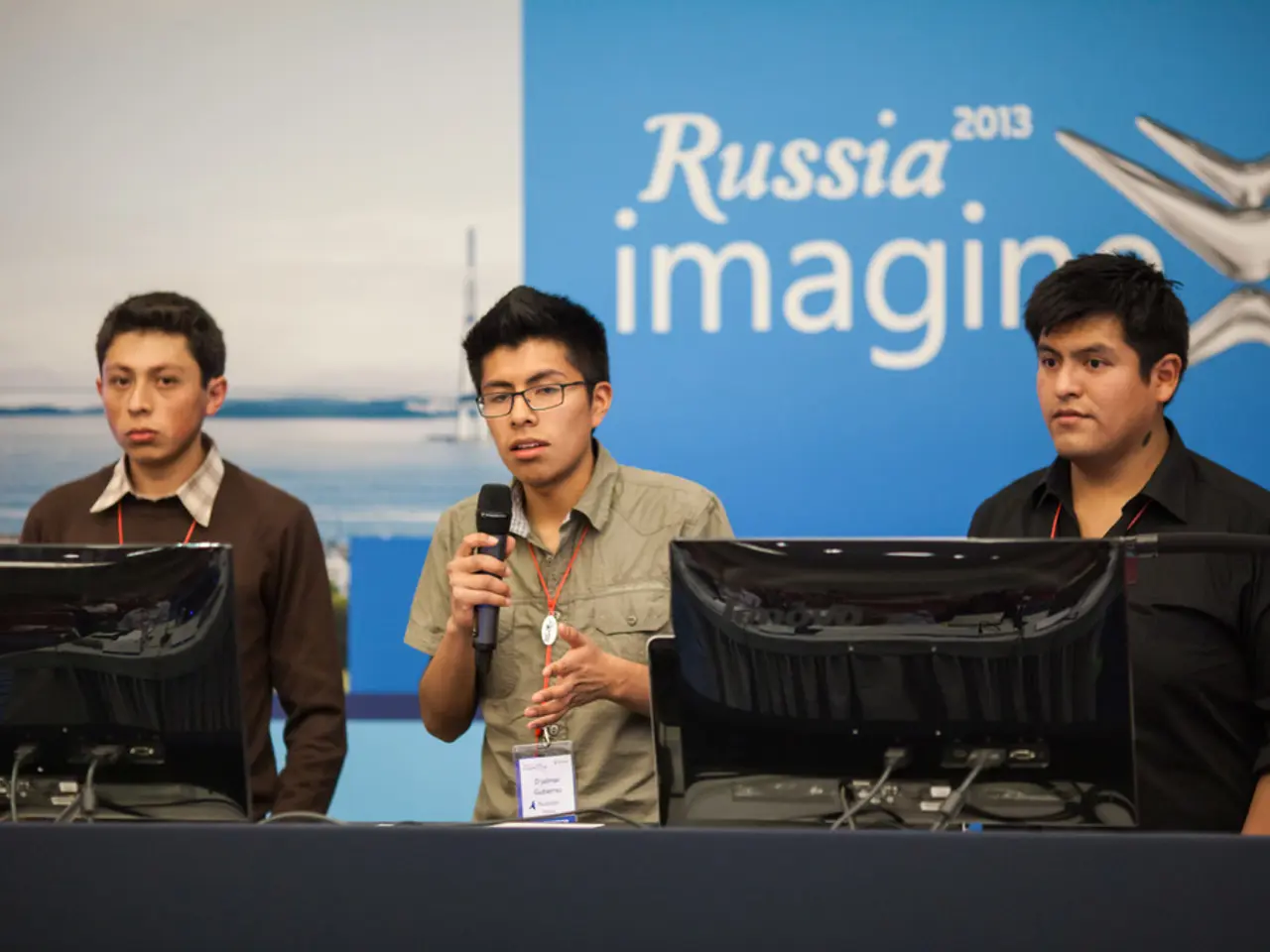Challenge to China's dominance in the AI sector posed by OpenAI's unveiling of open-source models
OpenAI, the San Francisco-based AI research company, has recently made a significant move in the global AI landscape by releasing two advanced open-source models—GPT-OSS-120b and GPT-OSS-20b—for free download and customisation[1][4][5]. These models, which can run on devices ranging from consumer laptops to high-end GPUs, are designed to support fine-tuning, tool use, and instruction following, enabling broad deployments and adaptations across various use cases[4][5].
The launch of these open-source models marks a strategic shift for OpenAI, as the company has predominantly focused on proprietary models in recent years. By making state-of-the-art models open source again, OpenAI aims to complement its closed models and foster wider innovation and accessibility[1][3][5]. The open models are licensed under Apache 2.0, allowing commercial and experimental use without copyleft restrictions or patent risk[4].
From a global AI market perspective, these open models have the potential to democratize AI development, particularly benefiting emerging markets and resource-constrained sectors that previously could not afford access to proprietary large models[5]. They also cater to governments and institutions with strict data residency or security needs, as open-weight models can be deployed locally without sending data to third-party clouds[3].
OpenAI’s move supports what it terms as building “AI on American rails,” promoting democratic AI infrastructure and broader participation in the AI economy by nations worldwide[3]. In the context of China’s dominance in AI, the new OpenAI open models provide a powerful counterbalance by offering openly accessible alternatives that can be modified and deployed without dependency on closed systems[3][5]. They enable developers globally to innovate on top of American-origin models, potentially offsetting China's ecosystem advantages[3][5].
Despite China's lead in the field in terms of sheer numbers of open models in the market, Sam Altman, co-founder and CEO of OpenAI, considers the launch as significant. He describes the new models as the best in terms of usability among all open models globally[1]. The new models remain open-source, meaning they are freely available for anyone to use[1].
This latest move by OpenAI marks a return to the company's origins, as its last open model was in 2019[1]. The launch of these new open-source models is seen as a challenge to the flurry of Chinese open-source models, potentially shifting competitive dynamics in the AI market by increasing accessibility and fostering innovation outside China’s closed ecosystem[1][3][5].
References:
[1] VentureBeat (2025). OpenAI launches new open-source models to challenge China's dominance in AI. [online] Available at: https://venturebeat.com/2025/08/01/openai-launches-new-open-source-models-to-challenge-chinas-dominance-in-ai/
[2] TechCrunch (2025). OpenAI takes a step towards democratizing AI with new open-source models. [online] Available at: https://techcrunch.com/2025/08/01/openai-takes-a-step-towards-democratizing-ai-with-new-open-source-models/
[3] South China Morning Post (2025). OpenAI's new open-source models aim to challenge China's AI dominance. [online] Available at: https://www.scmp.com/tech/artificial-intelligence/article/3181746/openais-new-open-source-models-aim-challenge-chinas-ai
[4] The Verge (2025). OpenAI's new open-source models are here, but what do they mean for AI? [online] Available at: https://www.theverge.com/2025/08/01/20152303/openais-new-open-source-models-mean-for-ai
[5] The Economist (2025). OpenAI's new open-source models could shake up the AI landscape. [online] Available at: https://www.economist.com/technology/2025/08/01/openais-new-open-source-models-could-shake-up-the-ai-landscape
The open-source models released by OpenAI, including GPT-OSS-120b and GPT-OSS-20b, are based on artificial-intelligence technology. By making these models open source, OpenAI aims to encourage wider innovation and accessibility, particularly in emerging markets and resource-constrained sectors.
The launch of these open models, such as GPT-OSS-120b and GPT-OSS-20b, marks a significant challenge to China's dominance in the AI market, potentially shifting competitive dynamics by increasing accessibility and fostering innovation outside China’s closed ecosystem.




